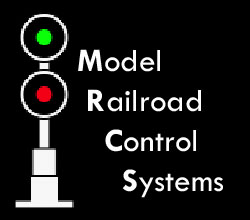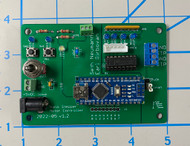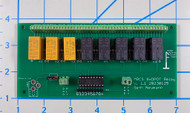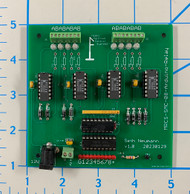Categories
Categories
Brands
Brands
- Home
- Interface Boards
- Arduino Relay Breakout for Arduino Nano
Arduino Relay Breakout for Arduino Nano
Product Description
Arduino Relays are inexpensive modules with 1,2,4,8, or 16 SPDT Relays that operate from 5 volt power and are controlled by logic level inputs, usually by an Arduino or similar 5V micro-controller. These have lots of handy applications for model railroaders and DIY electronics.
In this case we needed to control a group of Arduino Relays which in turn controlled a group of Sound Animation modules. The board has a socket for the Nano and 4 sets of male headers which correspond to the +5, GND and inputs for various configurations of Arduino Relay. Basic power filtering is provided as are a choice of 2.1 mm barrel jack and 3.5mm screw terminals.
See below for a simple animation controller sketch by Jon Schmidt and we hope to offer simple staging and interlocking controller sketches in the future.
Connectors
- 2 x 10 position 0.100 headers for either 2 8 position or 1 16 position Arduino Relay (D2-D13 + A0-A3) Each header has Ground, +5 and 8 outputs
- 4 x 6 position 0.100 headers for 4 position Arduino Relays (D2-D13 + A0-A3)
- 4 x 4 position 0.100 headers for 2 position Arduino Relays
- 4 x 3 position 0.100 headers for single Arduino Relays (note the pattern is different for the singlets)
- Barrel Jack for 5VDC (1A recommended) as well as 2 pairs of +5/GND on the 3.5 mm screw terminal, you can use either or use the screw terminal to distribute power to adjacent modules
- 0.100” Pads are provided for the unused Arduino i/o pins and +5 and Ground
Note that there is no magic about using Arduino Relays: this board can be used to consolidate i/o and power to any type of device you like and there are many sensors and output devices compatible with Arduinos that may use this cabling.
Contact us for special pricing if you need a quantity of these with a specific configuration
CAD Files, Schematic and Bill of Materials
Simple animation controller sketch
Assembly and Installation Instructions (coming soon)
 Loading... Please wait...
Loading... Please wait... 









